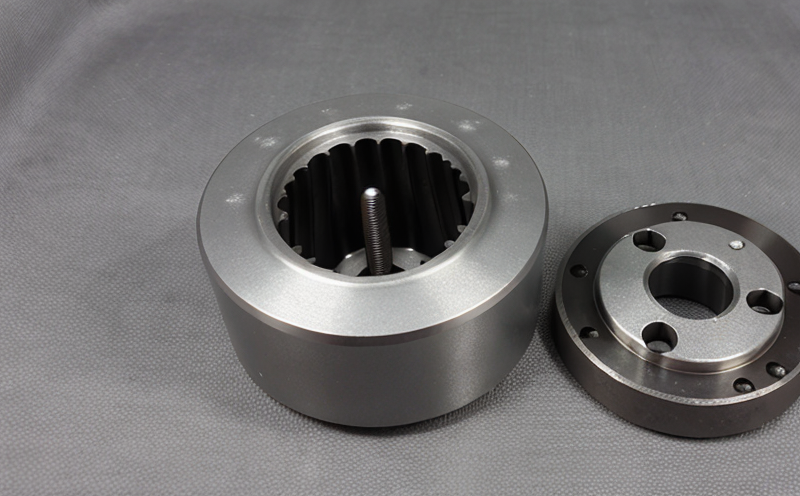ISO/ASTM 52915 Specification for AM File Format
The ISO/ASTM 52915 specification is a critical standard that defines the file format and data structure required to ensure interoperability in additive manufacturing (AM) processes. This standard plays a pivotal role in facilitating the seamless exchange of digital models between various stakeholders involved in AM, including designers, engineers, manufacturers, and quality assurance personnel.
The primary objective of this specification is to provide a universal language for describing 3D printed parts, enabling consistent communication across different systems and platforms. By adhering to ISO/ASTM 52915, organizations can ensure that their digital models are compatible with a wide range of AM systems, thereby streamlining the manufacturing process and reducing errors.
The specification covers several key aspects of the file format:
- Header information containing metadata about the part,
- Geometry data for the 3D model,
- Material properties and processing parameters,
- Quality control requirements, and
- Part identification.
The implementation of ISO/ASTM 52915 has several benefits for industries that rely heavily on AM technology:
- Improved accuracy in part production,
- Enhanced collaboration between teams,
- Reduced time-to-market for new products,
- Better compliance with regulatory requirements, and
- Increased efficiency in quality assurance processes.
The specification is designed to be flexible enough to accommodate various AM technologies and processes, including powder metallurgy (PM) techniques. This flexibility ensures that ISO/ASTM 52915 remains relevant as new materials and fabrication methods are developed. The standard also supports the transition towards sustainable manufacturing practices by promoting efficient use of resources and reducing waste.
For organizations seeking to adopt this standard, there are several key steps involved in implementation:
- Conduct a thorough review of current processes and systems,
- Evaluate existing software tools for compatibility with ISO/ASTM 52915,
- Pilot the use of the standard in selected projects,
- Train personnel on the new requirements, and
- Monitor and refine implementation as needed.
In conclusion, the ISO/ASTM 52915 specification represents a significant step forward in standardizing AM file formats. By providing a common language for describing 3D printed parts, this standard enhances collaboration, improves accuracy, and ensures compliance with regulatory requirements. As more industries embrace AM technology, the importance of such standards will continue to grow, driving innovation and efficiency across the sector.
Industry Applications
| Application | Description |
|---|---|
| Aerospace | The aerospace industry relies heavily on AM for producing complex parts with tight tolerances. ISO/ASTM 52915 ensures that digital models are compatible across different systems, reducing errors and improving part quality. |
| Automotive | In the automotive sector, ISO/ASTM 52915 supports the development of lightweight components through AM. The standard helps ensure consistency in part design and production, contributing to fuel efficiency and reduced emissions. |
| Medical Devices | The medical device industry places a premium on precision and safety. ISO/ASTM 52915 facilitates the exchange of digital models for AM parts, ensuring that all stakeholders have access to accurate information and reducing the risk of errors. |
| Defense | In defense applications, where security and performance are critical, ISO/ASTM 52915 ensures that digital models are securely transmitted and verified. This enhances traceability and accountability throughout the supply chain. |
| Agriculture | The agriculture industry is exploring AM for producing custom tools and equipment. ISO/ASTM 52915 supports this transition by providing a standard format for digital models, streamlining the manufacturing process. |
| Consumer Goods | In consumer goods manufacturing, ISO/ASTM 52915 helps ensure that custom parts are produced accurately and consistently. This is particularly important for industries where design changes occur frequently. |
The versatility of ISO/ASTM 52915 makes it applicable across a wide range of industries, each with its own unique challenges and requirements. By providing a standardized file format, this specification enables seamless integration between different systems and processes, ultimately driving efficiency and innovation in various sectors.
Environmental and Sustainability Contributions
The implementation of ISO/ASTM 52915 can have significant environmental benefits. By ensuring that digital models are accurately represented in the file format, this standard helps reduce material waste during AM processes. This is achieved by minimizing errors that could lead to rework or scrap parts.
Additionally, the specification supports sustainable manufacturing practices by promoting efficient use of resources and reducing energy consumption. The standardized file format also enables better tracking of materials throughout their lifecycle, facilitating recycling and reuse when necessary.
Incorporating ISO/ASTM 52915 into an organization's operations can contribute to broader sustainability goals, such as reducing carbon footprints and promoting circular economy principles. By adopting this standard, companies can demonstrate their commitment to environmental stewardship while maintaining the highest quality standards in their products.
The benefits extend beyond individual organizations; they also have a positive impact on the wider industry. Standardization enhances interoperability between different systems and processes, fostering collaboration and innovation across sectors. This collective effort contributes to a more sustainable future for all participants in the AM ecosystem.
Competitive Advantage and Market Impact
The adoption of ISO/ASTM 52915 provides organizations with several competitive advantages:
- Enhanced Interoperability: By ensuring compatibility across different systems, this standard facilitates seamless collaboration between stakeholders. This reduces bottlenecks and improves efficiency in the supply chain.
- Innovation: The specification supports the development of new materials and processes by providing a standardized framework for digital models. This encourages innovation and drives technological advancements.
- Better Compliance: Adhering to this standard ensures that organizations meet regulatory requirements, which can enhance their reputation and trustworthiness in the market.
- Quality Assurance: ISO/ASTM 52915 supports robust quality assurance processes by providing a clear framework for defining part specifications. This reduces the risk of defects and improves customer satisfaction.
In the highly competitive AM industry, ISO/ASTM 52915 is becoming an essential tool for maintaining quality and consistency across production processes. As more industries adopt AM technology, organizations that implement this standard will be better positioned to meet increasing customer expectations for precision and reliability.





